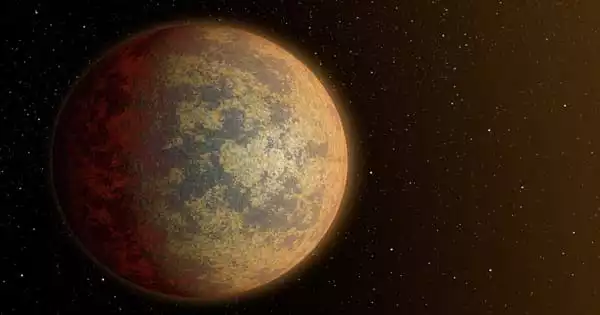Gliese 876 d is an exoplanet that resembles Neptune and orbits a M-type star. It is an exoplanet located about 15 light-years away in the Aquarius constellation. The planet was discovered as the third planet orbiting the red dwarf Gliese 876. It has a mass of 6.83 Earths, takes 1.9 days to complete one orbit around its star, and is 0.020807 AU away from it. GJ 876 has an apparent magnitude of 10.2 and an absolute magnitude of 11.8. GJ 876 d, an extrasolar planet in this planetary system, orbits the star GJ 876 every 1.9 days at an orbital distance of 0.02 AU.
At the time of its discovery, it was the lowest-mass extrasolar planet aside from the pulsar planets orbiting PSR B1257+12. Because of its low mass, it is classified as a super-Earth. It is 0.3 times more massive and 0.4 times larger than our Sun. In 2005, it was announced that it had been discovered.
Discovery
Gliese 876 d was discovered by analyzing changes in the radial velocity of its star caused by the planet’s gravity. The Doppler shift in the star’s spectral lines was used to calculate the radial velocity. Gliese 876 was known to host two extrasolar planets, Gliese 876 b and c, in a 2:1 orbital resonance at the time of discovery. After accounting for the two planets, the radial velocity still showed another period of around two days. On June 13, 2005, a team led by Eugenio Rivera announced the discovery of Gliese 876 d, a planet with a mass estimated to be 7.5 times that of Earth.

Mass, radius, and temperature
The mass of Gliese 876 d from radial velocity has one flaw: it can only be obtained as a lower limit. This is due to the fact that the measured mass value is also affected by the orbital inclination, which is generally unknown. Models that incorporate the gravitational interactions between the resonant outer planets, on the other hand, allow the inclination of the orbits to be determined. If Gliese 876 d orbits in the same plane as the other planets, its true mass is revealed to be 6.83 times that of Earth.
The planet’s low mass has led to speculation that it is a terrestrial planet. This type of massive terrestrial planet could form in the inner Gliese 876 system from material pushed inward by the gas giants’ inward migration.
Alternatively, the planet could have formed further away from Gliese 876 as a gas giant and then migrated inward with the other gas giants. This would result in a composition that is higher in volatile substances like water. The star would have blown off the planet’s hydrogen layer as it approached it via coronal mass ejection. An atmosphere containing water vapor and free oxygen produced by the breakdown of water by ultraviolet radiation would exist on such a planet.
Differentiating between these two models would necessitate additional information about the planet’s radius or composition. Because the planet does not transit its star, obtaining this information with current observational capabilities is impossible.
According to models, the radius of the exoplanet, based on its mass, is likely to be around 1.65 REarth. Gliese 876 d’s equilibrium temperature is estimated to be around 614 K (341 °C; 646 °F).
Characteristics
Because Gliese 876 d has only been detected indirectly through its gravitational effects on its star, properties such as its radius, composition, and temperature are unknown, though the planet is likely to experience high temperatures due to its close proximity to the star. Because of the planet’s low mass, it has been suggested that it is a terrestrial planet.
Assuming a density of around 8,000 kg/m3 to account for greater compression of material in a more massive planet than Earth, a terrestrial planet of 7.5 Earth masses would have a radius 73% greater than that of the Earth. This type of massive terrestrial planet could be formed in the inner part of the Gliese 876 system from material pushed towards the star by the inward migration of the gas giants.
















